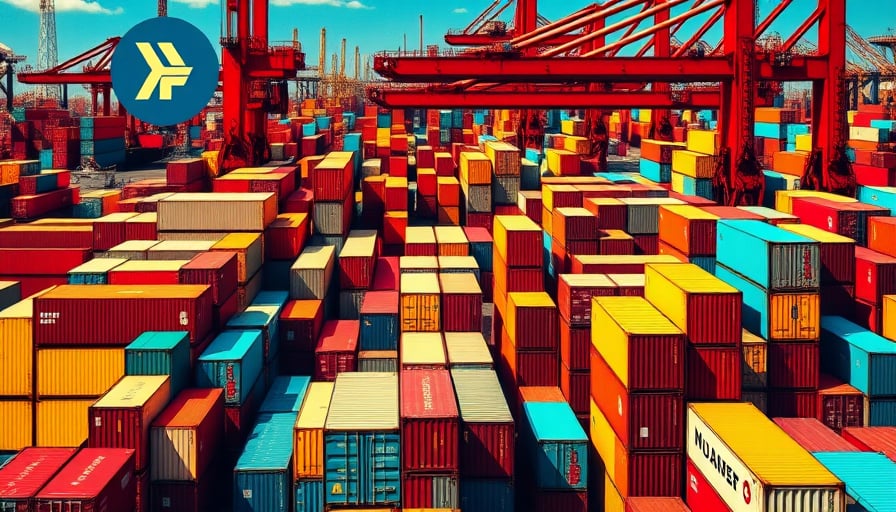Nvidia’s Market Volatility Amid Geopolitical Tensions and Supply‑Chain Realities
Nvidia’s share price has experienced a sharp reversal in the last week, erasing a substantial portion of its market capitalisation. The decline follows a period of accelerated gains that had buoyed the company’s valuation to new highs. Analysts now view the downturn as a signal of mounting investor caution, driven by three intertwined factors: export restrictions, supply‑chain bottlenecks, and a broader reassessment of the artificial‑intelligence (AI) industry’s trajectory.
Export Controls and the China Conundrum
The United States’ recent tightening of technology export controls has had an immediate impact on Nvidia. The company’s statements that it can no longer ship certain high‑performance products into China highlight a tangible operational constraint. This restriction is not merely a bureaucratic hurdle; it represents a strategic shift that could alter the global distribution of AI capabilities. For instance, the inability to export Nvidia’s latest GPUs to the world’s second‑largest consumer market may force the firm to re‑allocate production capacity toward domestic or allied markets, thereby constraining revenue growth.
From a human perspective, the decision to restrict exports can affect millions of engineers and researchers in China who rely on Nvidia’s hardware to advance AI research. The ripple effect may slow scientific progress, potentially widening the technological divide between China and the rest of the world. Moreover, the uncertainty surrounding export policies introduces a risk premium for investors, as the likelihood of sudden regulatory changes becomes part of the cost of capital.
Supply‑Chain Bottlenecks and Wafer Capacity
In response to sustained demand for its “Blackwell” GPUs, Nvidia’s chief executive Jensen Huang has entered into an agreement with Taiwan Semiconductor Manufacturing Company (TSMC) to secure additional wafer capacity. This partnership underscores the company’s proactive stance on mitigating supply‑chain delays that have plagued the semiconductor industry for years.
However, the very reliance on a single supplier—albeit a technologically superior one—exposes Nvidia to concentration risk. TSMC’s own production constraints, whether from raw material shortages, labor shortages, or geopolitical pressures, could cascade into Nvidia’s product pipeline. A real‑world example of this vulnerability surfaced last year when a major U.S. chipmaker faced a production slowdown due to a Taiwanese factory shutdown, leading to a supply glut and subsequent price decline. Nvidia’s engagement with TSMC may stave off a repeat scenario, but it also raises the question of whether the company’s diversification strategy is sufficient to insulate it from future shocks.
Diversification Beyond Graphics: CPUs, Networking, and More
Nvidia’s executive statements signal a broader vision that extends beyond its traditional graphics processing unit (GPU) business. The company’s push into CPUs, networking, and other components reflects a strategy to capture a larger share of the AI value chain. By integrating hardware that spans the entire AI ecosystem—from inference to data centre networking—Nvidia aims to create a more resilient revenue stream.
Yet, diversification comes with its own set of risks. For instance, Nvidia’s recent entry into networking equipment has faced stiff competition from entrenched players like Cisco and Juniper. The company must navigate not only technical integration challenges but also market acceptance hurdles. The long‑term success of this strategy hinges on Nvidia’s ability to demonstrate superior performance and cost‑effectiveness while maintaining a coherent ecosystem that attracts developers and system integrators.
Strategic Expansion in India
Parallel to its supply‑chain initiatives, Nvidia announced a multi‑billion‑dollar partnership with Indian deep‑tech start‑ups. This move is part of a broader effort to establish a foothold in key growth markets. India, with its burgeoning AI talent pool and sizeable demand for data‑center infrastructure, presents a fertile ground for Nvidia’s expansion.
The partnership will likely involve joint research labs, hardware‑accelerated AI solutions, and localized supply chains. Nevertheless, the initiative must contend with India’s complex regulatory environment and a competitive landscape where domestic firms such as TCS and Infosys are already providing AI services. The partnership’s success will depend on Nvidia’s ability to tailor its offerings to the unique needs of Indian enterprises while maintaining global standards for performance and security.
Regulatory Uncertainty and Valuation Implications
The confluence of export restrictions, supply‑chain constraints, and a shifting geopolitical climate has prompted analysts to reassess Nvidia’s long‑term growth outlook. While the company’s technology leadership and diversified product portfolio remain compelling, the valuation now reflects a higher risk premium. Market participants are increasingly questioning whether Nvidia can sustain its recent earnings momentum under these headwinds.
A key concern is the potential for future sanctions that could limit access to critical components such as memory chips or advanced lithography equipment. Any such restriction could slow the development of next‑generation GPUs, eroding Nvidia’s competitive advantage. Conversely, successful navigation of these challenges could position the firm as a leader in secure, compliant AI infrastructure—an outcome that would resonate positively with both investors and customers concerned about privacy and security.
Conclusion
Nvidia’s recent trading activity highlights the complex interplay between technology innovation, geopolitical forces, and market dynamics. The company’s aggressive moves to secure wafer capacity, diversify its product line, and expand into emerging markets demonstrate a proactive strategy to mitigate risk. However, the persistent threat of export restrictions and supply‑chain disruptions serves as a reminder that even the most advanced firms operate within a broader ecosystem fraught with uncertainty. Investors, policymakers, and industry stakeholders must therefore adopt a nuanced view that balances the promise of AI with the realities of a globalized, highly regulated technology landscape.
